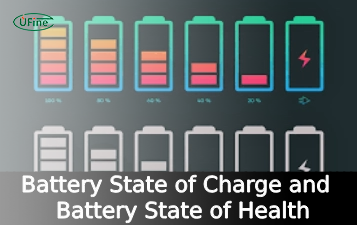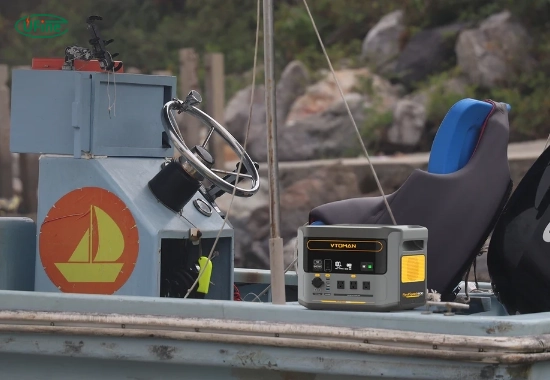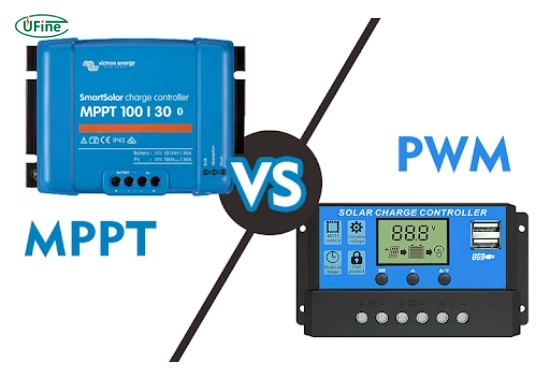
- Part 1. What is a solar battery charger for boats?
- Part 2. Why do boats need solar chargers?
- Part 3. How does a solar charger work on a boat?
- Part 4. What is the difference between MPPT and PWM controllers?
- Part 5. Comparing MPPT and PWM with other technologies
- Part 6. What size solar charger do you need for your boat?
- Part 7. What features should you look for in a marine solar charger?
- Part 8. What types of solar panels work best on boats?
- Part 9. How to install a solar battery charger on your boat?
- Part 10. How to maintain your solar battery charger system?
- Part 11. FAQs about solar battery charger for boat
Looking for the best solar battery charger for boat use? This is one of the most critical decisions for any boat owner who spends time away from shore power. A solar battery charger can keep your batteries healthy, power your essentials, and give you peace of mind while reducing your environmental impact. But choosing the right one can be tricky if you’re not familiar with the technology.
In this article, you’ll learn everything you need to know. From how solar charging works on boats to the differences between MPPT and PWM controllers, and even newer charging technologies, we’ll cover it all in simple and practical terms. Let’s get started.
Part 1. What is a solar battery charger for boats?
A solar battery charger for boats is a system that converts sunlight into electrical energy and stores it in your boat’s battery. It consists of three main components: solar panels, a charge controller, and the battery itself. The panels absorb sunlight and generate electricity. The controller regulates how the energy flows to the battery to prevent overcharging or damage. The battery stores the energy to be used later.
This system is particularly valuable for boaters who spend time on the water without access to shore power. It allows you to maintain your battery’s health, run essential equipment, and reduce dependency on noisy and fuel-hungry generators.
Part 2. Why do boats need solar chargers?
Boats rely heavily on batteries to power essential systems. These include lighting, navigation electronics, communication systems, refrigeration, bilge pumps, and sometimes even cooking equipment. If your battery goes flat while you’re offshore, you could lose access to critical systems.
Traditional power sources like generators or alternators can charge batteries, but they require fuel, maintenance, and produce noise. A solar battery charger provides a quiet, clean, and renewable source of energy. It works even when you’re anchored or docked without shore power. It keeps your batteries topped up, extends their life, and gives you peace of mind.
Part 3. How does a solar charger work on a boat?
A solar charging system works by capturing sunlight through solar panels. These panels generate direct current (DC) electricity. The electricity then flows into a charge controller, which manages the voltage and current going into the battery. The charge controller ensures that the battery is not overcharged or damaged.
The most common battery types on boats include lead-acid, AGM, gel, and lithium. Each type has different charging requirements. A good solar charger will be compatible with these battery types and will automatically adjust charging parameters to match.
The energy stored in the battery can then be used to power onboard systems when needed. Unlike fuel-powered generators, solar systems operate silently and without emissions.
Part 4. What is the difference between MPPT and PWM controllers?
Charge controllers are critical to the safety and efficiency of your solar system. The two most common types are MPPT (Maximum Power Point Tracking) and PWM (Pulse Width Modulation).
MPPT controllers are more advanced. They constantly track the voltage and current to find the optimum power point. This allows them to convert excess voltage into usable current, which means more efficient charging. MPPT controllers can be up to 30 percent more efficient than PWM controllers, especially in cloudy or varying sunlight conditions. They are ideal for larger systems or where space is limited and every watt counts.
PWM controllers are simpler and more affordable. They work by reducing the solar panel’s voltage to match the battery. This method is less efficient, especially when the panel voltage is much higher than the battery voltage. However, they are reliable for smaller setups and are often used on small boats or for maintenance charging.
If you have high power needs or want the most efficient system, choose MPPT. If you are on a budget or have low energy demands, PWM may be sufficient.
Part 5. Comparing MPPT and PWM with other technologies
While MPPT and PWM dominate the marine solar charging market, newer technologies and hybrid systems are emerging.
One such method is DC-DC solar charging, often used in dual battery systems with different voltages or chemistries. These chargers can boost solar input to match battery needs and are especially useful for lithium batteries.
Another innovation includes smart controllers with Bluetooth or Wi-Fi connectivity. These allow real-time monitoring and system control through mobile apps. Some systems also integrate with marine energy management systems that monitor energy flows between solar panels, batteries, shore power, and alternators.
Additionally, integrated solar panels with built-in controllers are becoming popular. These are compact, easy to install, and ideal for small boats or secondary battery banks. However, they are less flexible and more rigid to upgrade.
When comparing these technologies, consider your needs:
- For maximum efficiency and large systems, MPPT is best.
- For simplicity and small systems, PWM is a good choice.
- For smart control and integration, consider advanced or hybrid systems.
Part 6. What size solar charger do you need for your boat?
To calculate the right size, start by estimating your daily energy usage. Add up the amp-hours used by all devices on your boat in 24 hours. Then consider how many hours of direct sunlight you get daily.
Use this formula:
Watts needed = (Amp-hours per day × Battery voltage) divided by Average sunlight hours.
For example, if you use 60 amp-hours daily and have a 12V system with 5 sunlight hours, you need at least:
(60 × 12) / 5 = 144 watts
Always add a buffer of at least 20 percent to account for losses and cloudy days. In this case, a 180W to 200W system would be ideal.
Part 7. What features should you look for in a marine solar charger?
When choosing a solar battery charger for boat use, look for the following key features:
- Waterproof construction: Your charger should be rated IP65 or higher to withstand splashes, rain, and marine environments.
- Corrosion-resistant materials: Saltwater is harsh. Choose equipment with anodized aluminum frames, marine-grade wiring, and UV-resistant plastics.
- Smart charging profiles: Make sure the charger supports the type of battery you have and uses multi-stage charging to prolong battery life.
- Display or indicators: A built-in display or LED indicators help you monitor charging status and troubleshoot issues.
- Overcharge and short-circuit protection: Safety features like reverse polarity protection and thermal regulation are essential for marine use.
- Mounting flexibility: Depending on your space, look for panels that can be easily mounted on decks, rails, or canvas tops.
Part 8. What types of solar panels work best on boats?
There are three main types of solar panels:
Monocrystalline panels are the most efficient and compact. They work well in low light and are ideal when space is limited.
Polycrystalline panels are slightly less efficient but more affordable. They are a good choice if you have ample space and consistent sunlight.
Flexible panels are thin and lightweight and can bend to fit curved surfaces. They are easy to install and perfect for canvas biminis or uneven decks. However, they may have shorter lifespans and lower efficiency.
Choose the panel type based on your boat’s layout, energy needs, and budget. Monocrystalline or flexible panels offer the best balance for most marine users.
Part 9. How to install a solar battery charger on your boat?
Installing a solar charger is straightforward if you follow the steps carefully:
- Select a sunny location for the panel. Ensure it is free from shade and secure.
- Use marine-grade brackets or adhesive to mount the panel.
- Run the wires from the panel to the charge controller.
- Connect the controller to the battery using the correct wire gauge and fuses.
- Test the system during daylight to ensure charging is working.
Use only marine-grade components to avoid corrosion and ensure safety. Secure all wiring and avoid running cables through high-footfall areas.
Part 10. How to maintain your solar battery charger system?
Maintenance is simple but necessary:
- Clean panels monthly with fresh water and a soft cloth.
- Inspect wiring for wear or corrosion.
- Check the charge controller for warning lights or alerts.
- Make sure all connections are tight and dry.
- Test battery voltage regularly to ensure proper charging.
With basic care, your solar system can last 10 to 20 years.
Part 11. FAQs about solar battery charger for boat
What is the best type of solar charger for a boat?
MPPT chargers are the best for most boats due to their high efficiency, especially when sunlight is inconsistent or space is limited.
Can a solar charger fully charge a marine battery?
Yes. If sized correctly, a solar charger can fully charge and maintain your battery, even during extended trips.
Do I need a charge controller with my solar panel?
Yes. A charge controller regulates voltage and current to prevent battery damage. It is essential for any system over 5 watts.
What size solar panel do I need for a 100Ah battery?
Assuming 5 hours of sun, you need around 240 watts of solar to fully recharge a 100Ah 12V battery from 50 percent to complete in one day.
Can I leave the solar charger connected all the time?
Yes, as long as you use a smart controller that switches to float mode when the battery is full. This maintains the battery safely.
Related Tags:
More Articles

Battery State of Charge and Battery State of Health
Battery SoC vs. SoH explained: Learn professional methods to measure charge levels, test health status, and optimize battery performance for longer lifespan.
Difference Between 18650, 26650, and 21700 Batteries
What’s the difference between 18650, 21700, and 26650 batteries? Compare size, capacity, and performance to find the best lithium battery for your device.
LFP Battery Vs. LTO Battery: A Detailed Comparison
Compare LFP (LiFePO4) and LTO (Lithium Titanate) batteries by energy density, lifespan, safety, cost, and uses in EVs, solar storage, and backup power.
Compare 18650 battery types: Li-ion, LiFePO4, and LiPo. Key specs (voltage/capacity) and best uses for vapes, flashlights, EV batteries.
How to Distinguish Between Grade A, Grade B, and Grade C LiFePO4 cells?
Explore the differences between Grade A, B, and C LiFePO4 cells and learn how to choose the right one for electric vehicles, solar storage, or backup power.




